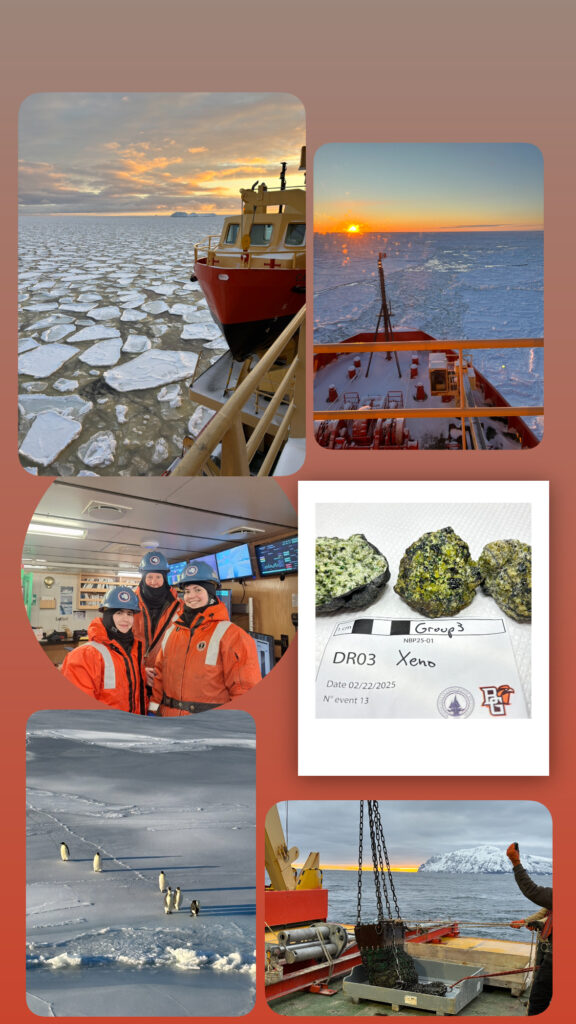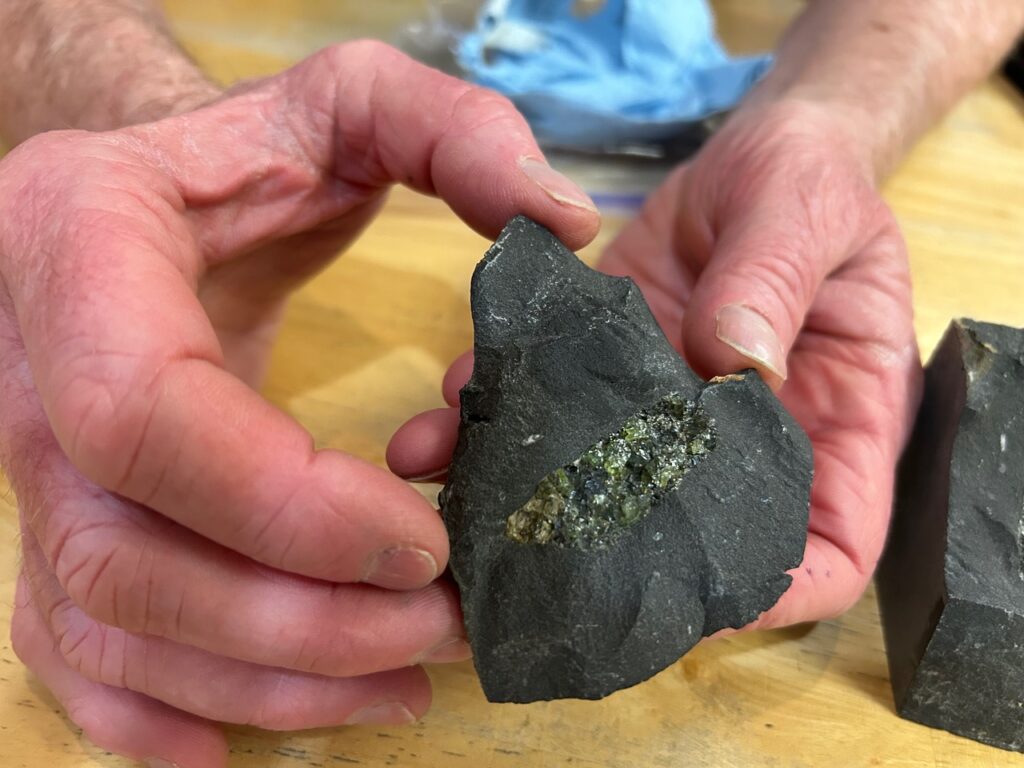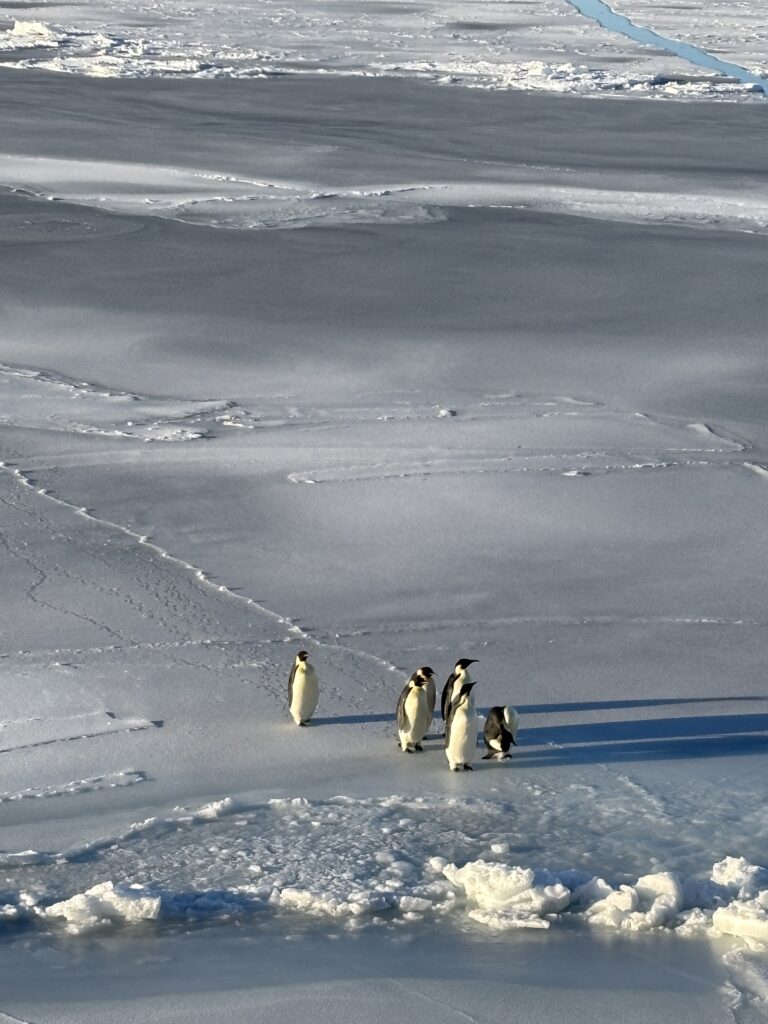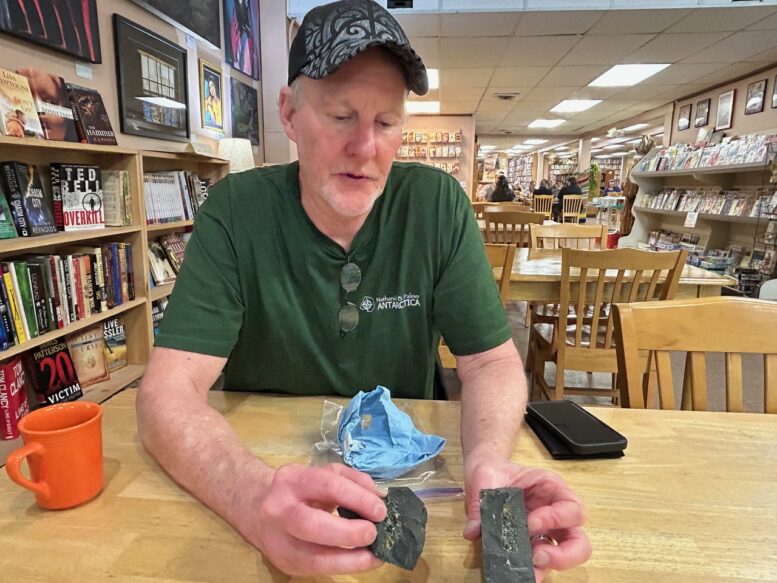By DAVID DUPONT
BG Independent News
BGSU Professor Kurt Panter recently returned from a three-month expedition to Antartica that led to explosive findings. At least what he and his team discovered were explosive within the last 9,000 years.
Panter, a professor of igneous petrology and geochemistry, and two graduate students, Jacci Kalemba and Katie Shanks traveled this semester to the Antartica to study volcanic activity near the far southern continent.
They were part of an international team of 13 scientists, some from France and Germany, and a number from the Woods Hole Institute on Cape Cod, Massachusetts.
In an area, they dubbed “the flap jack field” because of the formations likeness to pancakes, they discovered two volcanoes that had been active “recently,” in geologic time.
The debris that those pre-historic eruptions left behind provides crucial information about how the climate and environment has changed, Panter said.
A paper based on the initial findings has been submitted to Nature, a top tier scientific journal.
But there’s a lot more study to do.

The team carried back 20 pounds of samples and shipped back another 2,000 pounds. All of it was dredged from the ocean floor.
“Once we get the dates, and we get some of those things confirmed, we will have an idea of the climate change based on the dating of the volcanic material,” he said.
Panter, who has taught at BGSU since 2000, has been studying volcanoes on Antarctic for his entire career. This was his 11th trip there. His first was as a graduate student in 1988.
This was his first time exploring those underneath waters eastern Antarctica.
In the past, Panter and the teams he’s worked with have flown to land and set up camp on the continent. For this expedition, they sailed and remained on the 300-foot icebreaker class Nathanial.
The trip occurred just as winter was setting in, so once the area they wanted to survey was identified, the ship would have to make one pass to cut through the ice, and then turn around and repeat the route so it could dredge up the samples.
Panter noted that the researchers did not have control over when the timing of the trip. While it would have been good to be there a few weeks earlier, “we still got everything we wanted,” Panter said. “We were starting to go back to a few of the places that we went before to get more material.”

Those samples included rocks, part of the earth’s mantle, containing pyroxene that “represents the layer of the earth below the crust.”
The volcano’s eruption on the sea’s floor brought these fragments of the earth’s magma up as much as 50 kilometers (about 31 miles) deep to the surface and deposited.
The team members had to dig through what was dredged from the bottom for the specimens they wanted to study. There was plenty of life in the material including spicules, a kind of sponge consisting of sharp needles. The crew wore gloves. Panter said he ended up with a needle in his nose. The splinter-like spike took him a while to remove.

Wild life in the area was plentiful — whales, seals, and many species of birds from albatrosses to penguins.
The voyage started in New Zealand, an eight-day crossing. They returned to New Zealand.
This trip as with other research missions was funded by the National Science Foundation. Panter said it took 18 months after applying for the money to be approved, and then another year of preparation.
He had another application in the works even before on this trip. But the chaos in Washington D.C. has taken its toll on the NSF, and he has stopped working on that grant process.
“I hear from colleagues saying that they’re looking for jobs and NSF is laying off people and budgets are being cut,” he said. “It’s a bloodbath.”
He was concerned before they embarked of this latest trip that the funding would be cut. It wasn’t and he was off to the bottom of the earth.
At 62, he’s contemplating retiring in a few years, and moving with his wife, Ann Beck, to Montana.
This trip has yielded enough material to keep graduate students and post-doctoral fellows busy for a few years. And even in “retirement” he could continue to work on the research remotely.
Still, “I was hoping to go back one more time. Make it an even dozen,” Panter said. “Yeah, we’ll see. Maybe that was my last time.”

